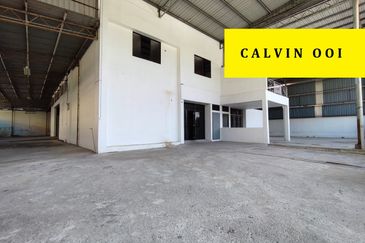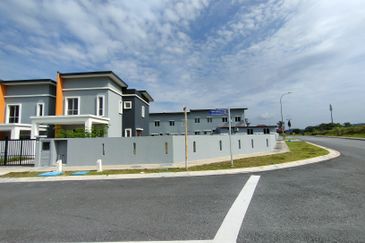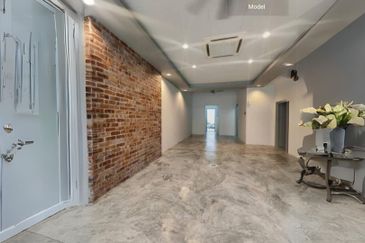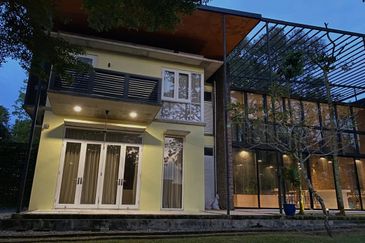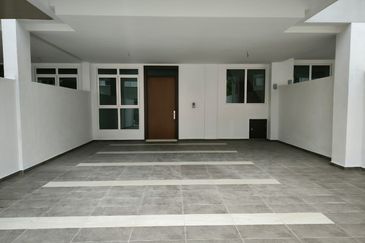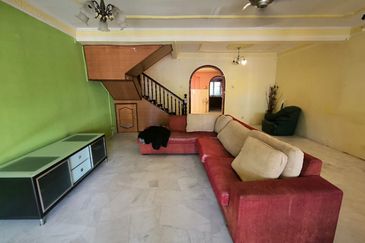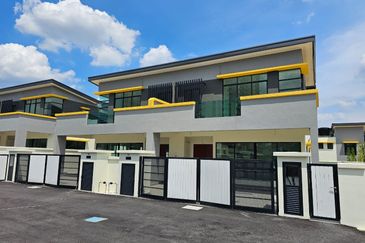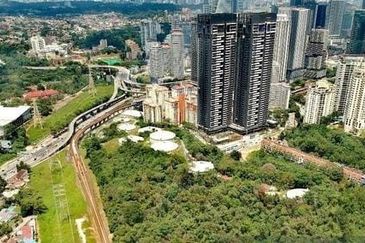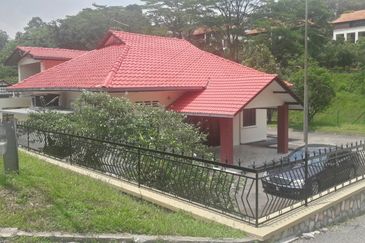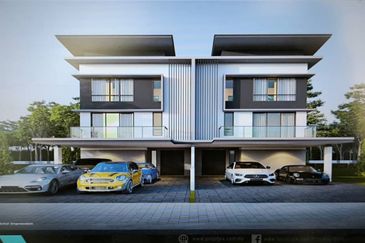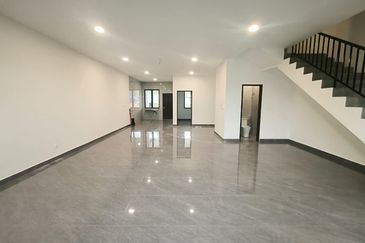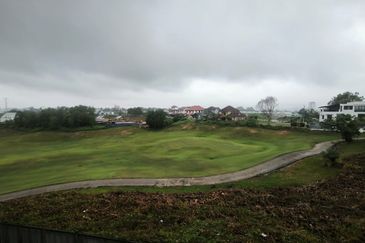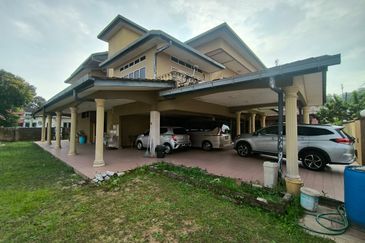
While a landscape architect can provide advice on the concept and approach of a project, ultimately, the decision rests with a property developer.
An example of a sustainable landscape site is the award-winning The Central Park in the popular Desa ParkCity township in Kuala Lumpur. The 13.19-acre Central Park with a 6.34-acre man-made lake was completed in 2008 as Malaysia’s first park with pet-friendly features like pet waste dispensers. Anchoring the amenities in the township is a 45-acre iconic retail entertainment centre called The Waterfront, wrapped around the Central Park; and the 11.3-acre British colonial-style architecture hybrid mixed-use development Plaza Arkadia — both award-winning projects.
Read also
When the bells and whistles turn ugly
What is sustainable landscaping?
Malaysia Developers’ Hall of Fame
Besides a living showcase of sustainable landscape, the park has successfully played a significant role in drawing investors and tenants to Desa ParkCity.
Pre-Covid-19 days, the park was a scene of bustling activities both on weekdays and weekends. To date, the park boasts a total of 125 tree species, 15 palm species, 54 shrub species and 10 aquatic plant species.
To support this, in 2014, the developer -- Perdana ParkCity - set up a softscape nursery within the township. Today, the nursery nurtures hundreds of shrubs to be transplanted not only to the park but also the entire township, to replace withered shrubs.

The vibrancy of the public park has not gone unnoticed. Numerous local councils have conducted field studies here.
The Central Park, run by ParkCity’s in-house landscape, property management and township maintenance department, bagged Gold in the 10-years-and-above specialised category in EdgeProp Malaysia’s Best Managed & Sustainable Property Awards in 2020.
In 2019, the developer bagged the EdgeProp Malaysia’s Responsible Developer: Building Sustainable Development. This was in recognition of the developer’s vision, commitment and efforts made towards the building of sustainable developments in Malaysia. ParkCity is also inducted into Malaysia Developers’ Hall of Fame where membership is exclusively accorded to winners of EdgeProp Malaysia’s Responsible Developer introduced in 2018.

Other members of the exclusive “Malaysia Developers’ Hall of Fame” including S P Setia Bhd, Paramount Property Development Sdn Bhd, AME Development Sdn Bhd, Sunway Property, Gamuda Land, Tanah Sutera Development Sdn Bhd, Eco World Development Group Bhd, Matrix Concepts Holdings Bhd and Sime Darby Property Bhd.
Creating a healthy ecosystem
Explaining the efficacy of the township design, ParkCity Group CEO Datuk Joseph Lau tells EdgeProp.my the inward-facing spaces of Desa ParkCity are designed to flow and correspond with one another, to provide good aesthetics, functionality, and comfort.

“With The Central Park placed in the heart of the master-planned township and connected with wide walkways, it allows the residents and visitors to enjoy walkable distance to get to the parks.
“Choosing the right plant species is important when it comes to a sustainable landscape. The selection at The Central Park consists of rare and exotic species in the Klang Valley such as Corypha Umbraculifera (Talipot Palms), Latania Lontaroides (Red Latan Palms), Kigelia Africana (Sausage Tree), Bombax Malabaricum (Red Cotton Silk Tree) and many more,” Lau highlights.
He adds that in order for the plants to be self-maintained, they have installed a new automatic irrigation system which helps to reduce the manual labour and accurately meets the watering needs.

“Furthermore, planting the aquatic plants helps to naturally balance the ecosystem by slowly absorbing the nitrate and phosphate from the lake water. Some of the aquatic plant species are Hanguanamalayana (Common Susum, BakongRimba), Lepironia Articulata (Grey Sedge, Blue Rush, RumputPurun), Phragmites Karka (Common Reed), Scirpus Grossus (Herb Linn) and many more,” Lau elaborates.
In early 2019, a new aquatic plant species called CyperusHaspan or dwarf papyrus was introduced in the Central Park Lake to further help improve the water quality.
Lau stresses that sustainable landscaping should start with a sustainable design. This will ensure the development is well managed and maintained to provide long-term support to the community and ensure a consistent quality of living, long after construction.

“Sustainable landscaping will further protect the environment to combat the changing conditions of the earth. Landscape planning is very important in order to cushion the effects of environmental hazards and risks to preserve the well-being of the community and environment.
“The lack of sustainable development from the start has many possible consequences, such as negative environmental impact including deforestation, pollution, global warming, climate change as well as modification to the ecosystem. These factors will eventually contribute to the decreased value of the development as many homebuyers today opt for having a natural environment within their home surroundings,” he adds.
This story first appeared in the EdgeProp.my E-weekly on May 21, 2021. You can access back issues here.
Get the latest news @ www.EdgeProp.my
Subscribe to our Telegram channel for the latest stories and updates
TOP PICKS BY EDGEPROP
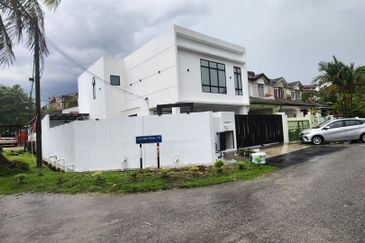
Bandar Damai Perdana, Kuala Lumpur, Kuala Lumpur
Cheras, Kuala Lumpur

Damansara Heights (Bukit Damansara)
Damansara Heights, Kuala Lumpur
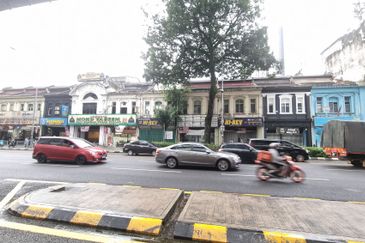
Jalan Tuanku Abdul Rahman
KL City, Kuala Lumpur
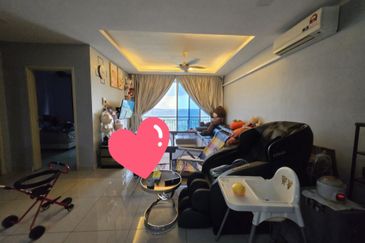
D'Ambience Residences (Ikatan Flora), Bandar Baru Permas Jaya
Permas Jaya/Senibong, Johor


